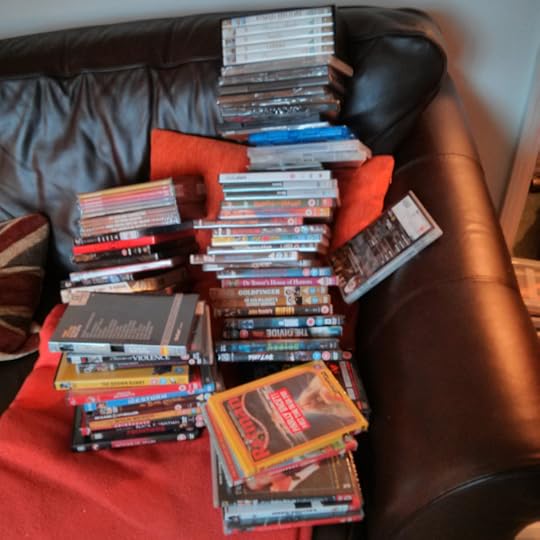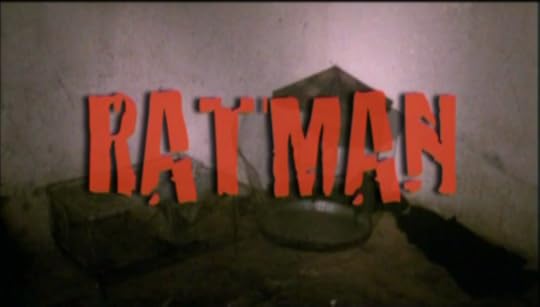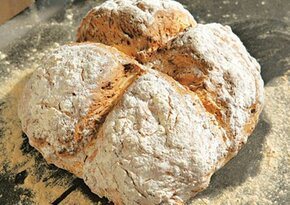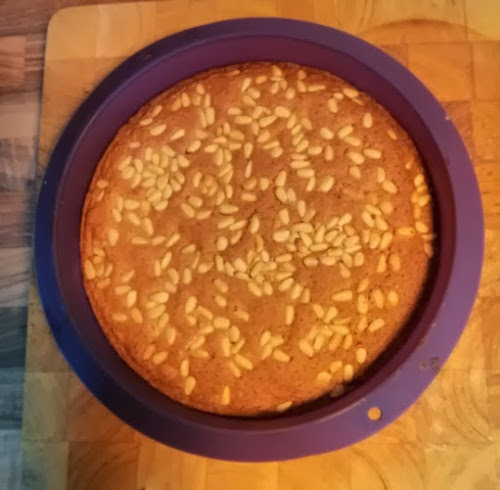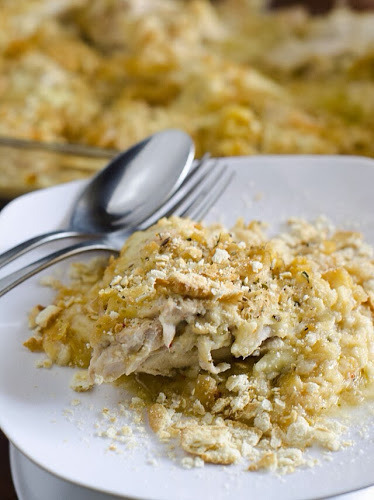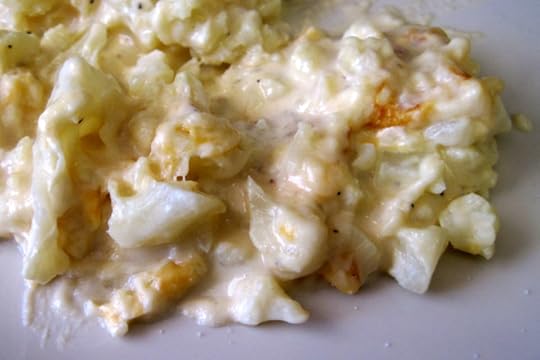Rob Wickings's Blog, page 61
February 3, 2014
Waste Not
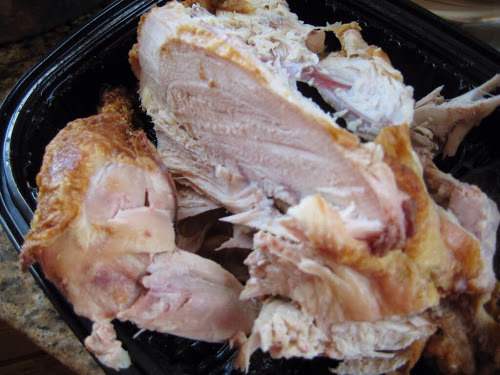
You see leftovers. I see three meals.
With more than half a million people relying on food banks in the UK, the discussion has, of course, ignored the underlying problem of uneven wealth distribution and turned, instead, to the notion of food waste. OK, fair enough, we can do that. This is the food strand of X&HT, after all, and as a nation we do bin a lot of food. AT a rough estimation, over £500 worth of grub per person goes from the supermarket to the fridge to the bin without going near our plates every year.
There's plenty of speculation as to why that happens. Everything from the proliferation of ready meals, to over-cautious Use By dates. I don't have a catch-all answer. It's a complex situation that deserves more than a soundbite. But I can tell you about how I deal with the food that passes through my kitchen.
I'm a great believer in using what I have, and thinking about how I can stretch it out. Part of that comes, I think, from frugal habits that I picked up in college, when I shared with three other blokes in a crumbling rental in Bournemouth. You can feed four people pretty cheaply when you're cooking big casseroles and stews. I learnt to shop with an eye on bargain veggies and cheaper cuts of meat and fish.
I also learnt the virtue of cooking more than you need. Leftovers are easy to turn into quick midweek meals. You can freeze your leftover stews and ragus. From frozen, they'll reheat in a hot pan in minutes if you forget to defrost them — just make sure anything you heat up that way is properly, bubbling hot all the way through. And don't forget, you can always bulk out leftover stews with extra treats like lentils or bits of bacon. While you're at it, don't forget that cooked rice and stale bread freezes well. The rice is brilliant for quick egg-fried rice, and old bread is an essential ingredient. Think croutons, breadcrumbs, or even the base of a bread pudding.
For me, the ingredient that sums up this approach best is the roast chicken. A treat for Sunday becomes the base for dinners well into the week. Once the chook has cooled, I strip the carcass, picking out all the goodies, then simmer the bones with peppercorns, a celery stick and a carrot or two to make stock. This stuff beats any Knorr cube into a cocked hat. You have the base for chicken soup, risotto, a curry, the start of a casserole or a quick sauce to slosh over pasta. Try this: slice some potatoes and onions, layer them in a shallow dish, pour over some stock and bake for 45 minutes until everything's soft, golden and bubbling. Voila, potato boulangerie.
Or, you know, just have a chicken sandwich. It's your roast. Do what you want with it.
The point I'm trying to make is that to my mind, waste in the kitchen comes from a lack of confidence in knowing what to do with leftovers, and binning veg as soon as it looks a little limp. This, frankly, is down to a lack of food education. I never had the chance to take domestic science at school, and it worries me that a lot of kids are denied that chance. I think knowing how to make the most of the food in your kitchen is an essential life skill, and will serve you well for the rest of your life. I have a lot of fun when I'm cooking, and get a real sense of pride when I throw something tasty together out of really uninspiring ingredients.
If we're not going to have a sensible discussion about the root causes of food poverty in the UK, then the least we can do is try to allieviate the symptoms. Buy what you need, and use what you've got.


January 31, 2014
Movies Unwrapped: RATMAN
Join me, whydoncha, as I explore the unexplored hinterland of my DVD collection.
We all have them. Those DVDs that were gifts, or part of a 3-for-£20 deal. You get them home, put them on the shelf and then, well, kind of forget about them. There they sit, still in their clingfilm, never quite enticing enough to pick up, unwrap, and pop in the player.
Readership, I have decided to give those neglected discs a chance. I want to review my collection and possibly clear out a few items that I know I’ll never watch again. But every film deserves a shot, right? So, every movie I own that is still in its cellophane wrapping is going to be dug out and watched.
Now, I knew that I had a bit of a problem in terms of buying films and not watching them. I hadn’t quite realised just how bad the situation had got. Readership, behold the enormity of the task ahead of me.
Impressive, huh? That’s probably a year of movie-watching if we’re going to do this once a week, and that doesn’t include the box-sets where one out the five films has been watched. I’ve also found a stack of discs from the era when newspapers were giving away free cover-mounted films. Those, too, go into the to-be-watched pile. That’s a ton of cinematic goodness. Relatively speaking.
So, where to start? Well, one disc jumped out at me. A gift from the ever-sophisticated Simon Aitken last Christmas, this one promises to be a gem of the highest ordure. So, let’s settle down with a cup o’ tea and a biccie, and enjoy together…
RATMAN (1988)
dir: Guiliano Carnimeo aka Anthony Ascot
starring: Nelson De La Rosa, David Warbeck, Eva Grimaldi, Janet Agren
I don’t think we need to assume that this is going to be high art, or indeed high anything. When the back cover promises “a guilty horror pleasure of gory delights” and “a glorious exploitation fest of bad taste, worse acting, needless nudity and tense, wince-inducing slaughter”, you know that Ratman was not high on any awards list in 1988.
The creature of the title is the result of twenty years of experimentation by the mad Dr. Olman, living in isolation on a remote Caribbean island. By “placing the sperm of a rat into the ovum of a monkey” he has created a creature with “the adaptability of a rodent and the intelligence of a primate.” In other words, a nasty little bugger that’s good at hiding and jumping out at you when you least expect it.

Ratman chows down
Rather than pricey puppetry or stop-motion, director Carnimeo hit on a killer wheeze. He cast the at-the-time world’s smallest man, Nelson De La Rosa, as the Ratman. Fitted out with a set of pointy rodent teeth and teeny tiny claws, De La Rosa is strangely disturbing, like Mini-Me gone feral. Ratman, of course, escapes from the birdcage in which Dr. Moreau Olman keeps him, and goes on the rampage, sinking his teeth into locals and one of a pair of visiting models, who is found wearing her colleague’s dress. This case of mistaken identity brings the other girl’s sister running. Along with a smarmy journalist, played by a series of terrible Hawaiian shirts filled by ‘actor’ David Warbeck, she sets out to find her sibling and solve the murders.

Very giallo
Ratman is no lost classic, let’s be clear. It’s as cheap and cheesy as a roadside caff’s toastie, and a murky, soft transfer means it’s frequently tough to see what’s going on, especially during the murders–which, let’s face it, are the main reason we’re here in the first place. To be fair, Shameless, the distributor, make it clear from the start that they were after the most complete version of the film, which meant using less than optimal elements. The end product, which looks like it was put together from projection print and analog video masters, has a gritty, exploitationy feel that suits the material well.
Scream queen Grimaldi elevates proceedings as model/Final Girl Eva, chewing the scenery with brio in every scene. Whether in the obligatory shower scene, to running around a darkened house in short shorts, she’s the girl you can’t take your eyes off. The rest of the cast are, as the cover copy makes plain, terrible. But that’s to be expected.

Grimaldi, subtle as ever
It’s not the paciest of movies, and the sequences with Eva’s sis and walking plank-in-shirt Warbeck drag painfully. But the last half-hour, as Ratty stalks Eva through the mad doctor’s dilapidated compound, are nervy fun, full of misdirections. There’s even a proper jump scare.
Guiliano Carnimeo directed a number of giallo, including the respected The Case Of The Bloody Iris. He hasn’t directed since Ratman, which seems a shame. The movie has a certain verve and gusto, even if the gore and effects are more jammy than gruesome.
So, the big question, and the one I’ll ask at the end of every edition of this strand:
was Ratman worth unwrapping?
I’d have to say yes. It’s not brilliant, but the movie is a solid chunk of mozzerella that, at 78 minutes, doesn’t outstay its welcome. It’s worth sticking around for the final twist, as well. If you want to watch it, it’s available at Lovefilm.
Or you can win my copy! Just answer this simple question:
Nelson De La Rosa was the mascot for which American baseball team?
Answers in the comments, first correct one gets the disc. Good luck!

Ratman pounces


January 27, 2014
Soda Bread: a loaf in an hour
This is one of those lifesavers that will make you look like an absolute genius and get you out of all kinds of trouble.
TLC and I arrived home yesterday after a long damp afternoon out. We were both chilled in the wrong way, soaked through and ready for comfort food. A robust dinner to bring the warm back.
The cauliflower that needed to be used in the fridge had dictated the course of the meal: a big, fat cauli cheese. It would be perfect with some warm bread on the side to scrape up the white sauce.
One problem: no bread. I’d forgotten to put a loaf on for the weekend, and last week’s effort was decidedly green around the gills. I had two choices. I could shrug back into my wet coat and boots and slog down to the shop. Or I could use my mad sick baking skillz and address the situation like a man.
This is a moment where soda bread comes into its own. You get a fresh loaf on the table in an hour, from a standing start. It’s simple to make, with none of that tedious mucking about with proving and knocking back. If you’ve never made bread before, this is the place to start.
Start by getting your oven up to speed. 200°C, 170 if you’re rocking a fan oven. Grab a big bowl, and measure 500g of plain flour into it, along with a teaspoon of salt and two teaspoons of bicarbonate of soda. Bicarb is the magic ingredient, and does all the rising that you’d normally leave to yeast. It’s a fast and dirty way to lift a loaf. But for it to work you need a live ingredient.
Many soda bread recipes call for buttermilk, the byproduct of butter production. It’s not tough to make from fresh, which is worth bearing in mind as the stuff isn’t as easy to get in the shops as you’d like. But natural yogurt will work just as well, and I always have a big tub of it in the fridge for dips and quick desserts. Unflavoured, naturally. Slop about 400ml into the dry ingredients. Now mix it all together, until you get a loose, craggy dough. Add a splash of milk if it looks too dry.
Tip the whole mess out onto your worktop, which you’ve lightly floured, and gently knead the dough for a minute. We’re not looking for Paul Hollywood-style pummelling here, and the end result will not be springy and supple in the way you’d expect to see with a normal dough. Go gently. You want a very soft, almost sticky dough that will just hold its shape.
Tuck it into a ball shape, and plop the dough onto a greased baking sheet. I used a silicon cake pan, which does as good a job. Deeply slash a cross into the top, and pop it into the oven, which should be hot by now. Set a timer for 40 minutes.
And that’s it. Ten minutes work, and then the bread can do its magic without any further intervention on your part. Well, not quite. I mean, keep an eye on it. It will rise a fair bit as the bicarb and yogurt do their thang, so make sure it doesn’t lift into
the oven rack above it, and move the loaf down a bit if it looks like it’s browning too quickly. But apart from that, no fuss, some muss. Hey, it’s baking. Now wash your bowl and clean down your worktop.
Standard rules apply when the soda bread is done. Let it cool on a rack for 10 minutes or so before you tear into it, longer if you can stand it. The cross you cut into the dough makes it easy to rip the bread into wedges. It’s best eaten warm as an edible scoop for anything saucy or stewy. It’ll have a savoury tang from the bicarb and yogurt, and a gloriously crunchy crust. Soda bread will keep for a couple of days after you make it. It toasts brilliantly.
Soda bread is an easy way to snag some bragging rights in the kitchen. Making your own is almost stupidly easy. Four ingredients. Ten minutes of actual work. Kudos for days.


January 24, 2014
Don’t Save The Cat
There are an awful lot of books out there that claim to have the formula for screenwriting success. I've read more than a couple. And I've found that there's a gaping hole in the middle of that formula.
Ever since failed script man Syd Field realised that those that can't do, teach, and make a ton of money in the process, the film section of any decent bookshop has been filled to groaning with how-to's on the Golden Path to the Perfect Blockbuster. Now, there are certain benefits to reading one or two of these mighty tomes. If you're serious about selling a script, it has to be formatted according to certain rules–submission without these guidlelines in place marks you as an instant noob and will put you to the bottom of the slush pile, or more likely the bin.
The thing is, of course, that modern scriptwriting software takes care of most of that for you. From Final Draft to Celtx, to simple Markdown languages like Fountain, the formatting is sorted out automatically. As long as you have the wit to start your script with EXT. DAY. FOREST (if you have a budget) or INT. DAY. YOUR MATE'S LIVING ROOM (if you don't) then you're pretty much sorted on that front.
Which leads to the annoying question of what goes into the script. Heroes and heroines and conflict and adventure and romance and all that shit. Here's where the big guns come out with their formula to screenwriting success. The most pernicious of these has to be Save The Cat, by Blake Snyder, the man who brought you Stop Or My Mom Will Shoot! The book lays out the structure of the Hollywood movie in surgical detail, splitting it into story beats that are timed to the page. Inciting incident? Page 25. The betrayal of your lead character's friend? Page 90. If you wonder why most blockbusters feel the same these days, blame Snyder. The studios have enthusiastically adopted his blueprint as the only way their films should be constructed.
Why Save The Cat? Well, the one thing on which most books on scriptwriting agree (apart from the mind-bogglingly obvious stuff like Thou Shalt Tell A Compelling Story and There Shalt Be A Big Thing At Stake is this: audiences want to like your main character. They need to empathise with him (and yes, for the vast majority of movies, to the community's eternal shame, your main character will be male). In order to do that, they need a signifier of his all-round white-hattedness early in the film. He needs, in short, to do something noble. Pet a puppy. Play a little softball with the Little League team that practices down the road.
Save a cat from… something.
Now this is fine and dandy, but as with most formulas it only fits a certain model. And it ignores the elephant with the ugly suit and sunglasses in the middle of the room.
What if your lead character isn't supposed to be likeable?
A couple of recent releases show Save The Cat up as the path to generic pablum that it so clearly is, but it's a simple task to pile up the examples of great films that have bastards in the lead. I'm not talking anti-hero here, or lovable rogue. I'm talking flat out steal-your-girl-and-your-ride monsters. Most of Clint Eastwood's work, for example, from No-Name to Dirty Harry to the Growler in Gran Torino. Horror heroes are not exactly social workers. You're not, I hope, going to tell me that the hero of Dracula is Jonathan Harker. And I haven't even dipped my to toe into the cold waters of theatrical drama. Shakespeare's heroes, for example. Hamlet? Whiny, revenge-spurred nerd. Macbeth? Regicidal loon. Richard III? Nutbag on a stick. I can think of dozens more, and I bet you can as well.
But let us point ourselves back at January 2014. Martin Scorcese's controversial The Wolf Of Wall Street is kicking up fuss-storms across the crit-o-sphere for its faithful adaptation of the autobiography of Jordan Belfort, the trader in toxic stocks that unrepentantly bankrupted thousands of his clients in the quest for bigger and uglier profit. He starts off as an apologetic scumbag, and ends the film as an unapologetic scumbag with an awful lot of money. His excesses are inexcusable. Leonardo DiCaprio plays him with clownish brio and propulsive energy, but there is no sense that Belfort is anything but a nasty piece of work. This, to be fair, is just the latest example of a Scorcese trope. From Taxi Driver to The King Of Comedy to Goodfellas and beyond, his leads are not nice guys. You're not rooting for Jordon Belfort. You're willing the horrible little toerag to fail.
The model collapses even further when you look at the work of the Coen Brothers. Their latest film, Inside Llewyn Davis, is widely acknowledged as a poke at the Save The Cat framework. The main character is an obnoxious prick who spends large chunks of the movie trying to, quite literally, save his ex-girlfriend's cat. Llewyn is angry, prickly and doleful throughout (with good reason, but he's no ray of sunshine). Not your typical hero. The Coens have taken the notion of that “likeable” main character and twisted it by the ear until it screams. Look at Jeff Lebowski. Look at Anton Chigurh, ferchrissakes.
The idea of the vast panoply of modern film-making being tied to a one-size-fits-none template gies me a bad case of the yips. It seems that just as digital techniques are freeing writers and directors to tell their stories in new and innovative ways, there is a move to make those stories comply to a lumpen and ill-suited set of rules. One reason that I tagged Alfonso Cuarón's Gravity as my film of the year was because it eschews a traditional three act structure in favour of a more free-flowing approach. There is no reason to write your story in the way that Blake Snyder or Syd Field tell you to. There's equally no reason not to understand the structural underpinnings of a script, but don't get tied into thinking that there's only one way to analyse and interpret the way it's been built. It's all too easy for a critic to apply his or her pet theories to a script. Classics of the past are already being re-examined and their validity as decent scripts evaluated on the basis of whether or not they comply with Save The Cat. That's no way to treat fiction. Once critics start asking what the main character's Save The Cat moment is on a documentary, then it's game over.
It's simple, really. If you're reading books on writing instead of reading scripts, novels and plays and then writing your own, then you're wasting your time. Find the classic films that you love, hunt down the scripts and figure out why it is you love them so much. Why do you care about Wesley and Buttercup? Why are you rooting for John McClane instead of Hans Gruber? Don't rely on third parties to tell you why your heart swells when Luke looks out over the twin sunset of Tattooine. Figure it out for yourself and you're one step closer to writing a scene that will inspire the next generation.
There's a world of ideas out there. Don't lock them in a cage.


January 20, 2014
Pinolata
Over the weekend, I treated myself to a day in the kitchen.
Despite the dry, bright weather it was obvious that TLC wasn't budging from the sofa (we had, admittedly, gone hard on the cocktails the previous evening; curse you, Brown's and your reasonably priced martinis) and we really couldn't face the wreckage of the garden.
So, we breakfasted on bacon and proper puffy buttermilk pancakes drowned in maple syrup, and dined on pastitsio, a Greek layered dish of macaroni, bechemel and a tomatoey lamb filling, baked with lots of cheese and breadcrumbs on top. Rib-stickingly good for a cold night.
I fancied doing a bit of baking in the afternoon. Our Christmas treat to each other was a decent, solid stand mixer–not the classic and pricy KitchenAid, sadly, but the Kenwood KMix, which has more or less the same specs and a significantly less hefty pricetag. It's a powerhouse that makes light work of bread, cakes and meringues.
We also, courtesy of a new CostCo membership that had me wandering the food department in a quasi-religious trance (the meat! the sweets! the sausages!), have a catering-size bag of pine nuts. No, I don't know what I was thinking. Perhaps I had a vision of whipping up huge vats of pesto. However, what's done is done and I must needs do the best I can with what I have. To me, my Google. Pine nut recipes.
I love nuts in cakes, so with that in mind my search was pleasingly brief. Pinolata is a simple and delicious cake from Italy that's simple to whip up and worth trying out.
Before we begin, a side note on Rob's Tau of Baking. Cake making is anathema to my way of cooking. I subscribe to the handfuls and pinches school that doesn't worry too much about measurements. However, you have to be precise to make a decent cake, and it's good to get everything prepped up before you start. Once you do, I'm always surpised how quick the process of getting a cake in the oven can be. But I do have to force myself to be organised. I'm a convert to using the American cup system, which means a bit less weighing out. I have a 200g plastic thing that came with the breadmaker we bought 10 years ago that still does the job sans muss ou fuss. Get yourself one. It makes life a lot easier.
On your marks, get set, bake. If you don't have a stand mixer, grab a big bowl and a sturdy spoon and prepare for a workout. But first up, toast your pine nuts, as they need your undivided attention. Throw a third of a cup of pine nuts into a hot, dry, frying pan and toast them until they have golden patches. Keep the pan moving, and don't take your eyes off them. Those little suckers burn in an instant. This should only take five minutes or so.
Now, into the bowl goes a cup and a quarter of sugar, half white, half soft brown. Follow that with three eggs, and beat the lot until pale in colour and double in size. Next, add half a cup of extra virgin olive oil (for a British twist, might I suggest cold-pressed rapeseed oil? It's all I use in the kitchen these days, but if you must be authentic, olive oil it is), the zest of a lemon and a teaspoon of vanilla extract. Beat again briefly to mix that all in.
Add a cup and a quarter of flour, along with a pinch of salt to the mixture, and gently mix the lot together. Add your toasted pine nuts, and give it all one final stir until the nuts are evenly distributed.
There, cake mix. Spoon-licking good.
Pile your batter into a greased cake tin (I have a 12″ silicon job that does sterling service) that has greaseproof paper on the bottom (you might want to Google the fine art of making a cartouche for an easy way of fitting a square sheet into a round tin–or use a square tin), smooth it off, and scatter over another third of a cup of untoasted pine nuts. Into a pre-heated oven at 180C for about 40 mins. Gives you time to tidy up. Cake making is a messy business.
The end result is dense and sticky, but not too sweet, and somehow honeyed. It's pale gold, elegant and absolutely lovely warm from the oven. I don't know why, but it feels like something that a Greek cafe would serve up with a strong black coffee for elevenses. I could get a serious habit for this cake.
I'd suggest tweaks at this point, but to be honest I can't think of anything I'd want to change about pinolata. It's perfect just as it is.
Now, if anyone has any suggestions for what to do with 500g of pine nuts…


January 16, 2014
The January Whoseasy
Download: january-whoseasy.m4a
Now that the dust has settled post-Xmas and everyone’s yakking about Sherlock, we can take that all-important bit of critical distance and talk at length about Doctor Who. Seriously, one of these days when we talk about brevity being a necessity, we’re going to mean it. Not this month, though.
Rob and Clive are joined by film-maker and nu Who-hater Keith Eyles for a spin through the past and present of Doctor Who with, as befits a show with time travel at its core, the future.
Warning: contains gratuitous use of a sonic screwdriver.


January 13, 2014
A quick way with chicken for a weekday meal.
I've always worked unusual shift patterns, which mean I get days off in the week. At least one of those is a cooking day, where I cogitate over a bubbling pot of deliciousness. Those days are gone.
OK, slightly overboard on the melancholia, there. What's happened is this: I've been moved onto a shift that puts me at work for four days a week, Friday off. Yeah, boohoo, poor me. That means I have to rethink how I cook to a certain extent. The slow-cooked stews, ragus and curries I normally delight in will have to become a weekend thing. Monday to Thursday, I'll have to speed the process up a bit, or TLC and I will be eating just before bedtime.
Here's a meal I came up with over the weekend as a way of clearing out a few leftover bits and bobs in the fridge (breadcrumbs, stock, some risotto that I fried gently in a pan as a side, making fragile patties). It has the virtue of being quick, easy and tasty: the holy trinity of weekday cookery. I used chicken thigh fillets, but feel free to use breast if you'd rather.
Get your oven up to heat, 200C. While that's happening, thinly halve and slice an onion, and cook it gently in a little oil for 5 minutes or so, until softened. Meanwhile, pop your chicken, sliced into decent chunks (say a couple of forkfuls per piece), into an ovenproof dish, along with a couple of sliced mushrooms. Once the onions are ready, slather them over the top of the chicken and mushrooms, and then pour over some stock. It should come to about halfway up the chicken.
Pop the whole lot in the oven for 10 minutes or so. While that's puttering away, blitz a couple of slices of bread in a food processor to make coarse breadcrumbs. The older the bread the better, but do chop off any green bits. Coat the crumbs in a little oil.
After the 10-20 minutes, loosely cover the chicken with the crumbs, then back in the oven the whole lot goes for another 10 minutes.
That's it. The end result won't be too wet, as the crumbs will have soaked up some of the excess stock as they crisp. It's not too heavy a meal, but there's a nice mix of textures with the crunchy crumbs playing against the soft chicken, and the flavours are amazing. Serve it with some simply steamed spring greens and maybe some rice if you're starving.
Tweaks? You could try this with a thick slab of salmon: if so you can skip the initial cooking stage, and give the onions a little longer in the pan before they go over the fish. Maybe layer a soft melting cheese over the chicken just before the breadcrumbs go on, or jazz up the crumbs with herbs (thyme and parsley work well) lemon zest and a dusting of parmesan.
Maybe weekday cooking won't be so tough after all.


January 10, 2014
#RobWickingsDay, or How I Helped Pacific Shaving Co. Raise $20,000
This is a story of how to do an Indiegogo project right.
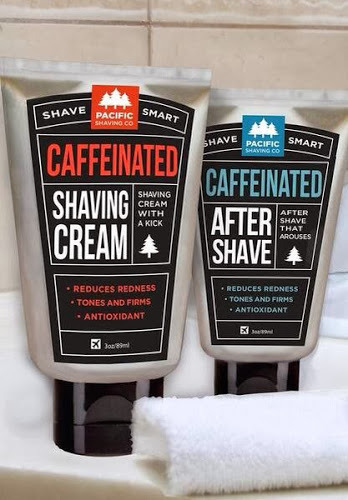
I hate to shave. It's an annoyance, it takes time, and I'll end up, if not bloody, then sore around the chops. I'd have a beard, but TLC informs me that if that happened I'd also be single. So, I suck it up, and scrape my face twice a week or so. For love.
You'd think, then, that an Indiegogo campaign offering shaving cream would be a no-no. But what if that shaving cream had a kick? What if that shaving cream… was caffeinated?
Now, I hate to shave, but I love my coffee. I have a Barstucks app on my Nexus that gets nearly daily usage, a burr grinder at home, and I get through the filter jug at work like the stuff's going out of fashion. I'm a slave to the buzz, people. I even tried Alpecin caffeine shampoo once, and boy, was that a let-down. Not enough juice in it to give the kick of an espresso.
But caffeinated shaving cream? I was tickled by the notion, and cheerily retweeted the link I'd found through Uncrate. A thirty-second joke, a mild amusement.
The company that are Indiegogoing the product, Pacific Shaving Co, are a small husband-and-wife team, who already have a successful range of creams, aftershaves and balms. The caffeinated stuff is an addition, and they needed ten grand to launch it. Small means mobile, and fast to respond. Pacific Shaving were quick to respond to my little joke, retweeting and replying to it, as well as following me on Twitter. It was simple good manners for me to respond in kind.
Over the next week or so, PS Co. popped up on my time line, cheering when they hit their funding target. I cheered with them. I was warming to the notion of caffeinated shaving cream. A lot of cosmetics already contain caffeine, as it's a vasoconstrictor–it reduces redness, and makes skin look a bit younger. Ideal when you're scraping a blade across your face.
Then, yesterday, as I was idly flicking through Twitter on my way into work, I saw this.
Who's going to be the one to put our caffeinated shaving @Indiegogo campaign over $20K?? igg.me/at/pacificshav…—
Pacific Shaving Co. (@pacificshaving) January 09, 2014
Hmmm. I clicked through. The campaign stood at $19,975. 25 bucks would put them at the magic figure, and there were some great deals and packages on offer. I couldn't resist.
Readership, I bought some. Although it was an impulse purchase, it didn't feel that way. I had become engaged with the brand, my interactions putting me in the mindset to buy. It was fated to happen. All I needed was the nudge.
Me. RT @pacificshaving: Who's going to be the one to put our caffeinated shaving @Indiegogo campaign over $20K?? igg.me/at/pacificshav…—
Rob Wickings (@Conojito) January 09, 2014
The big question was, would they say thanks? Did I now have a relationship, however tangential with the brand? Simple answer?
@Conojito @Indiegogo Henceforth today shall be known as #RobWickingsDay. Thanks for the support!—
Pacific Shaving Co. (@pacificshaving) January 09, 2014
And that left me with a big smile on my face for the rest of the day. My own hashtag. How cool is that? It was gleefully played with.
Apparently today is #RobWickingDay. How has @Conojito touched your life? Point to it on this doll.—
Kaiju Industries (@KaijuIndustries) January 09, 2014
@KaijuIndustries @Conojito I'll be celebrating #RobWickingDay the traditional way: rocking back and forth in the corner, weeping silently.—
Anna Fruen (@Thiefree) January 09, 2014
(we won't mention the mis-spelling: I'm used to it).
But the simple fact was that the tedious chore of buying shaving cream had transmogrified into a lark, into a bit of a game. And that turned a half-afterthought of an RT into a solid sale. PR companies charge good money to get that sort of interaction. Stan and CC at Pacific Shaving have the gift to do it effortlessly. The fact that I not only know the names of the people who run the company but that I have engaged with them on an email conversation tells you how well this little transaction has gone.
So, what have we learnt? A good Indiegogo campaign is not just a storefront. It's a chance to show off your brand as a whole, to engage with present and future customers in a very direct manner. If you're smart, it can be as important a part of the project as the product and the perks. Let's put it this way: I appear to have become a cheerleader for Pacific Shaving Co., and as I said at the beginning, I don't even like shaving. Selling a product that the customer didn't even know they wanted? Priceless.
The Indiegogo campaign for Pacific Shaving Co.'s Caffeinated Shaving Cream and Aftershave runs until mid-February. They've secured funding, so you're guaranteed to get the product, and there are some very tempting deals on offer if you choose to contribute. If you like to be awake when you shave, this might just be the stuff for you.
Pacific Shaving Co.'s Caffeinated Shaving Cream and Aftershave


January 6, 2014
Return Of The Fodderblog: Cauli Mac And Cheese
I love food. I love writing. Why shouldn't the two mix?
Well, to be honest, they used to. Search X&HT under “fodderblog” and you'll see how much I used to write on the subject. It's down to me that my food writing has slid down to nothing, and there's no real reason why it can't start back up again. Certainly, LMC has nagged me about it. So, in the interests of keeping him happy (and quiet) I'm going to write about food more on the blog.
To ease ourselves in, here's a lighter take on a classic, as created by Jamie Oliver, tweaked slightly for logic's sake. It's comfort food without the heft: something I think we can all appreciate in the post-Xmas doldrums.
Take a cauliflower, broken into florets, and a couple of handfuls of macaroni (penne will do at a pinch, rigatoni is the right shape but too big in the beam for this recipe) and pop them into a big pan of boiling water for about 10 mins, until the pasta and veg are tender. While that's happening, preheat your oven to 200C, and grate about 200g of cheese and a clove of garlic into a bowl. Then mix the best part of a small tub of creme fraiche into the mixture. You want a rubbly, thick-textured paste that, to be honest, you could spread on toast and grill if you fancy it.
Once your cauli and mac are done, drain them, hanging onto the cooking water, and slop them into an oven-proof dish. The cooking water is loaded with starch from the pasta, and makes a great sauce base as long as you're not too heavy handed. Add a couple of spoonfuls at a time into the cream cheese mix, until you get something that's about as runny as single cream. Somewhere between a half and a pint should do it. You don't want to go too heavy. The sauce will thicken a little more in the oven*. Then let the sauce meet the veg and pasta and mix the whole lot together. Grate a little extra cheese over the top (parmesan's great if you have it, but whatever's around is fine) and shove it in the oven for 10-15 mins until the cheese is golden and the sauce is bubbling.
Shove in your face, declaiming on your genius at every mouthful.
Right, tweaks. As it stands, this makes an exempalry side dish for anything grilled, fish or meat. But you can make it your own, and into a standalone meal (maybe some buttered bread on the side to scoop up the last of the sauce) without too much effort. Jamie recommends cooking some bacon in the dish that the cauli and mac go into, ovening it until crisp while the veg is cooking, and then blitzing it with some breadcrumbs to go over the top. The breadcrumbs are a great idea, but I'd just chop the cooked bacon into bits and scatter them into the cauli-mac mix before the sauce goes on. Cooked chicken works well (this is a great way to use up meat from the weekend roast), and I have a hankering to see what some smoked haddock would be like, chunked raw then cooked in the creamy sauce (I guess you'd need that sauce to be a little bit looser than usual). How about tipping a half-teaspoon of mustard powder in with the cheese and cream for a more warming finish?
This is a dish that will get you rethinking cauliflower mac and cheese, moving away from the dense blanket of white sauce towards something a bit lighter and more flavoursome. It's utterly moreish and much easier to make: no tedious mucking about with milk and flour. One to bring you back from the brink after Christmas has kicked your ass.
*You could, as Jamie does, simply mix the water and cheese mix into the dish with the cauli and mac in it. My method means you have a little more control over the consistency of the sauce.


December 31, 2013
2013: That Were The Year, That Were.
Gosh, it doesn’t feel like 365 days since I was last here, ruminating on times past and things to come.
However, that’s how it is. So, lovely Readership, the time has come to hang out the flags, spark the fuse on the cannonade and announce the Excuses And Half Truths Best Of List. If you’d care to join in and share your picks, go ahead and pop ‘em in the comments.
Best Track:
My 2013 Playlist is full of goodies, but the track that I listened to the most and that I found most inspiring came from an album released in 2011. Readership, I have myself a serious Band Of Skulls habit. Storming live headline shows and an amazing support gig for Queens Of The Stone Age meant that 2013 was not a fallow year for the Southampton rockers, and the new album Himalayan is going to be a real highlight of next year. The first single, Asleep At The Wheel, stomps like Godzilla, and I’m vibrating with excitement to hear what they’ve come up with.
For now, though, enjoy my Track of 2013: from the album Sweet Sour, this is Bruises.
Runner-ups:
Daft Punk: Lose Yourself To Dance
David Bowie: I’d Rather Be High
Suede: For The Strangers
The Joy Formidable: Maw Maw Song
Daughter: Youth
Best Album:

A toughie. It’s been a hella year for the album as a format, with surprise drops from Beyoncé and a Mercury-nominated record from an artist we all thought had slipped into quiet retirement: David Bowie. My discovery of the Playlists.Net widget on Spotify has turned every Monday morning into a joyful exploration of the new and exciting. How do I choose the best album amidst such a cornucopia of joy and wonder?
Well, it has to be the album that I just keep coming back to time and again. That one where, whenever a track comes up on shuffle, I find I had to start the whole album again from the start. Even then, there’s an unreasonable choice to be made between two records. Ultimately, I can’t decide.
Therefore, I have two Best Albums for 2013: Pale Green Ghosts by John Grant and Monkey Minds In The Devil’s Time by Steve Mason. Both are meditations on love lost and hearts broken. John’s synth-drenched ballads rage against his betrayal by the man who was the love of his life. Steve’s more scattershot style mixes dub, psych and rock as he takes that theme further, railing against the loss of his country to demonic forces, ultimately calling for revolution. They’re both angry albums that stand up to repeated listens.

Runner-ups:
Queens Of The Stone Age: Like Clockwork
Suede: Bloodsports
Low: The Invisible Way
Laura Marling: If I Was An Eagle
Pearl Jam: Lightning Bolt
Best Book:
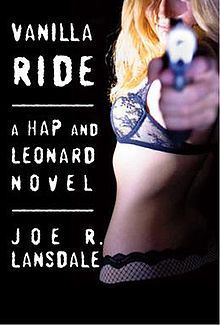
Here’s a dreadful admission for you: I barely read anything this year that was released in 2013. This doesn’t mean I wasn’t reading. If anything, I powered through more books this year than ever before. But the double tap of an unruly TBR pile (that was added to with a couple of unfortunate visits to some really good second-hand shops) and a Kindle-full of stuff I hadn’t got round to led to a conscious decision to shun new releases. The whole process was strangely freeing, and meant that I finally got round to reading some real stonkers.
I should note that it’s also been a particularly shitty year for losing authors that I love and respect. Let’s just take a moment to remember Iain Banks, Elmore Leonard, Richard Matheson, Doris Lessing, Frederik Pohl and Jack Vance, among many others.
My book of the year is Joe R. Lansdale’s Vanilla Ride. Written in 2009, and the seventh book featuring trouble-for-hire team Hap and Leonard, it’s chock full of cracking dialogue, creative swearing, characters that come off the page and snog or slap the face off you, and a story that blasts along like a Camero on nitro. If you’re a fan of fast-moving crime, you cannot do better than these. Well worth tracking down.
Runner-ups:
The Martian: Andy Weir
Sandman Slim: Richard Kadrey
George V. Higgins: Cogan’s Trade
Warren Ellis: Gun Machine
Christopher Priest: A Dream Of Wessex
Best Comic:
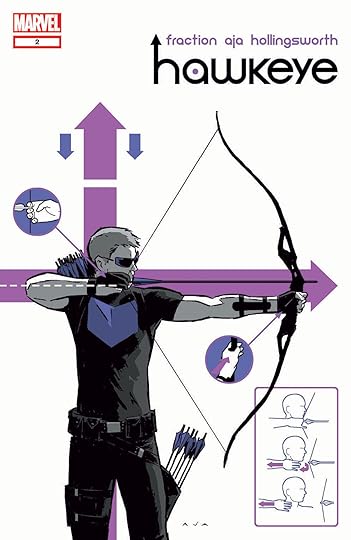
With the appearance at X&HTowers of a brace of iPads last year, I suddenly rediscovered the joys of the monthly comic book. A 10″ screen is perfect for devouring graphic loveliness, and apps like Comixology make it easy to subscribe and manage your habit. It’s been a grandstand year for interesting work, once you get away from the masks and capes.
Which of course makes my pick of the comic of the year all the more ironic. Matt Fraction, David Aja and Annie Wu’s Hawkeye has taken the notion of the life of a second-string Avenger and created the freshest work that I’ve seen in years out of the conceit. By keeping his day job out of the equation, Clint Barton’s life has become the focus showing a different side to the man with the bow as a loveable trouble-magnet. His on-off friendship/romance with Hawkeye Kate Bishop has led to the Young Avenger becoming as much a star of the book as Barton himself. Let’s put it like this: any book that can devote an issue to telling the story from a dog’s eye view and make it work has to be worth a look, no?
Runner-ups:
Brian K. Vaughn and Fiona Staples: Saga
Matt Fraction and Howard Chaykin: Satellite Sam
Alex DiCampi: Smoke/Ashes
Greg Rucka and Michael Lark: Lazarus
Ed Brubaker and Sean Phillips: Fatale
Best Film:

Gravity. It’s Gravity. Of course it’s Gravity. A film that could only be made in the 21st century. A space film that has in one stroke redefined how you portray action in zero-gravity. A drama that radically reshapes the way film story is structured. A film with an extraordinary central performance that, for the most part, you only see from the neck up. An astonishing achievement and one that left me stumbling away from the cinema with my head swimming and filled with the possibilities that Alfonso Cuarón’s film offers and the multiple pathways that we can take from here.
Runner-ups:
Blue Is The Warmest Colour
Pacific Rim
Before Midnight
Only God Forgives
Blue Jasmine
So that’s my pick of the good and the better in 2013. What have I missed out on? Where did I go wrong? If you don’t tell me, I’ll just carry on making the same mistakes, you know.
To all, a fine New Year, in which there will be more Speakeasies, and a sackful of shenanigans.
Happy 2014, y’awl.



